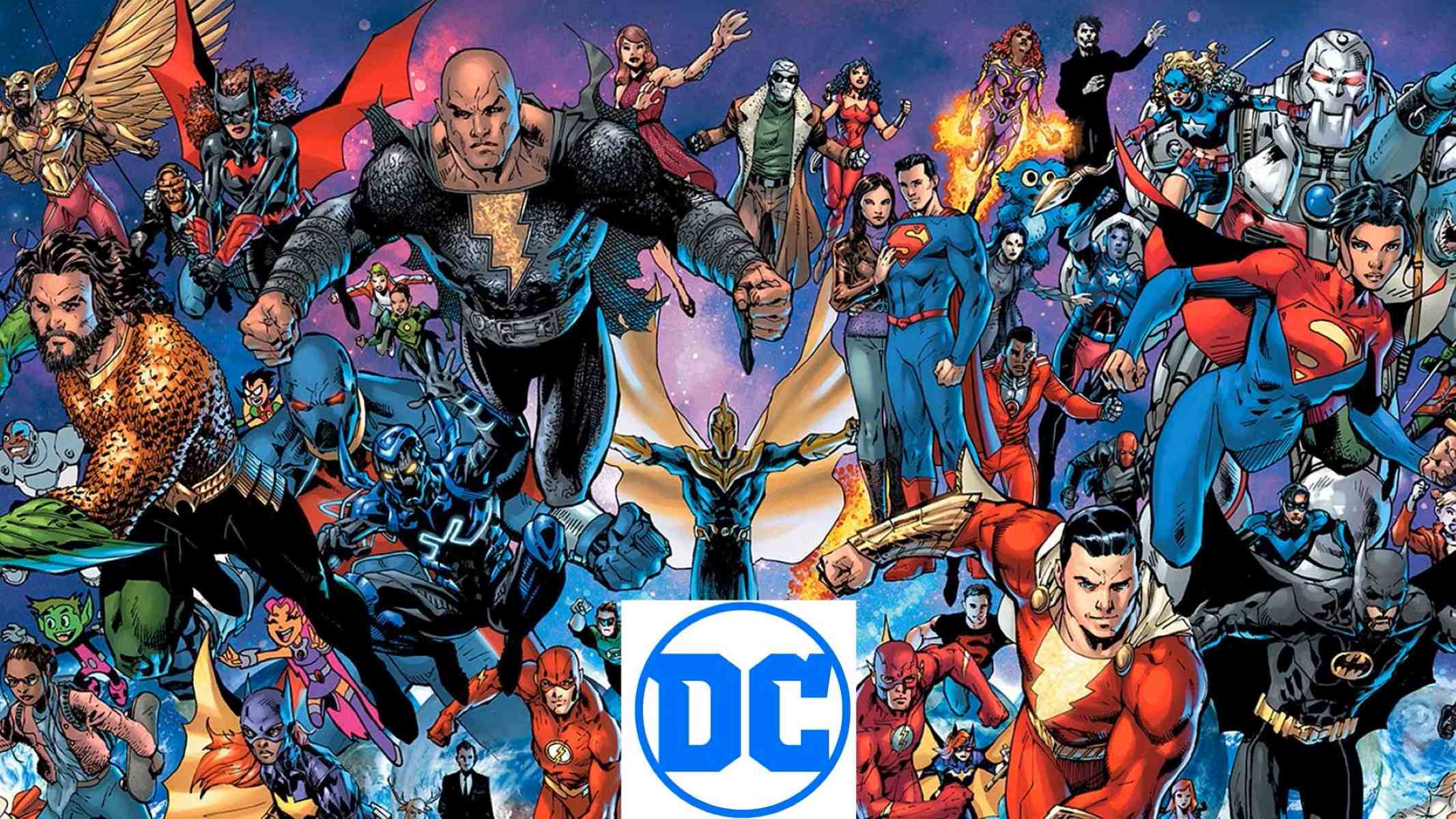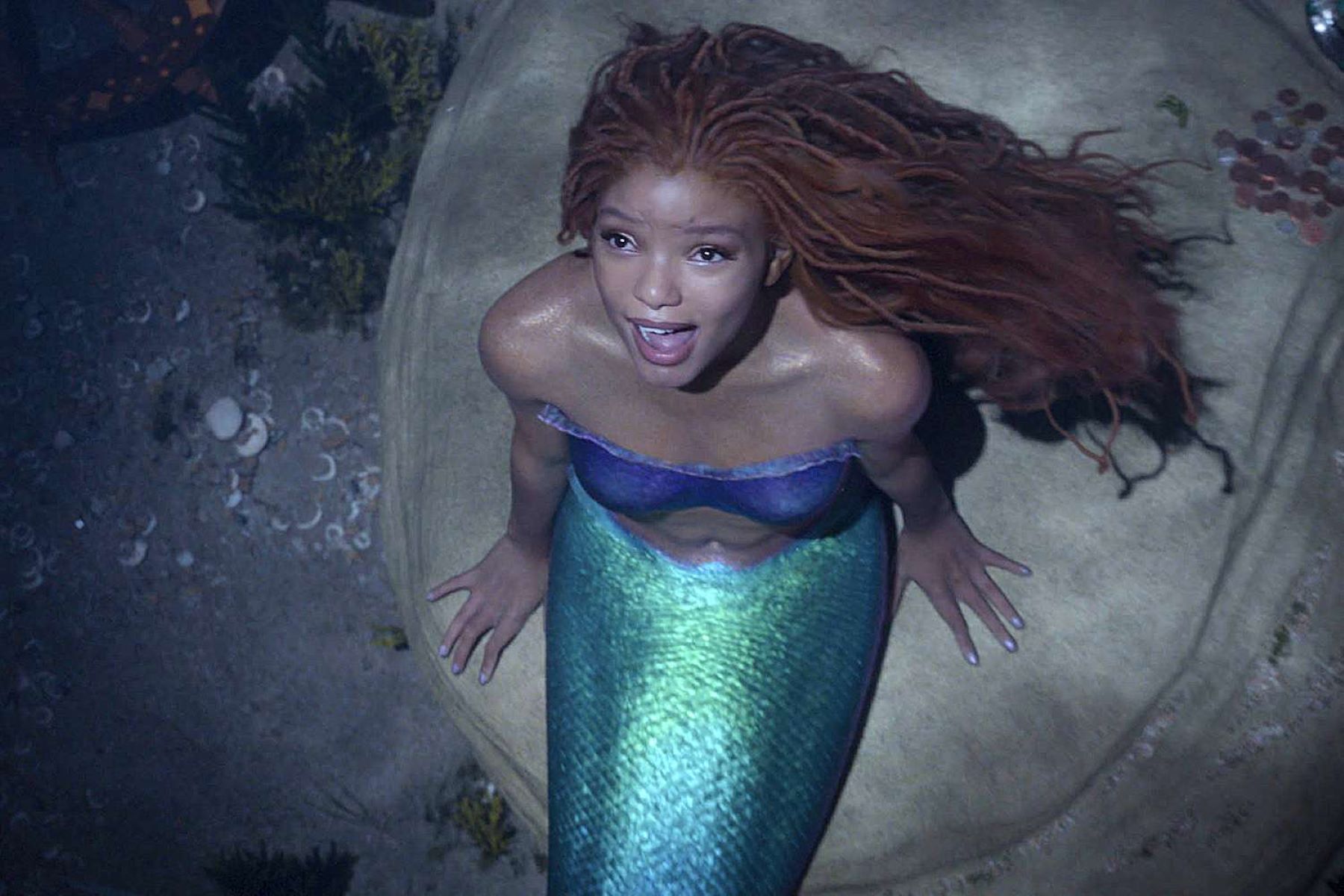Home>Opinion and Editorial>Why DC Should Ditch Live Action And Go All-In On Animated Films


Opinion and Editorial
Why DC Should Ditch Live Action And Go All-In On Animated Films
Published: January 18, 2024
Discover why DC should prioritize animated films over live-action and embrace a new era of storytelling. Explore this opinion and editorial piece for insightful perspectives.
(Many of the links in this article redirect to a specific reviewed product. Your purchase of these products through affiliate links helps to generate commission for Regretless.com, at no extra cost. Learn more)
Table of Contents
Introduction
In the realm of cinematic storytelling, the battle between live-action and animated films has raged on for decades. Both formats offer unique advantages and have carved out their own niches in the entertainment industry. However, when it comes to the world of superheroes and larger-than-life characters, the debate takes on a new dimension.
DC, known for its iconic roster of superheroes and villains, has a rich history of live-action adaptations. From blockbuster hits to cult classics, the live-action realm has undoubtedly showcased the prowess of DC's characters on the big screen. Yet, as the landscape of filmmaking continues to evolve, the question arises: Should DC consider shifting its focus from live-action to fully embracing the potential of animated films?
This article explores the compelling case for DC to pivot towards animated films, delving into the success of animated storytelling, the limitations of live action, and the untapped potential that animated films hold for the DC universe. As we embark on this exploration, it becomes increasingly clear that the animation medium offers a myriad of opportunities for DC to captivate audiences in ways that live action simply cannot match.
Read more: Why Older Women Should Ditch The Swimsuit
The Success of Animated Films
Animated films have carved out a significant space in the realm of cinematic storytelling, captivating audiences of all ages and transcending cultural boundaries. The success of animated films stems from their ability to transport viewers into fantastical worlds, evoke powerful emotions, and deliver narratives that resonate on a profound level. This success is evidenced by the enduring popularity of animated classics such as "The Lion King," "Toy Story," and "Frozen," which have left an indelible mark on popular culture.
One of the key strengths of animated films lies in their ability to defy the constraints of reality. Through the art of animation, filmmakers can bring to life extraordinary characters, breathtaking landscapes, and imaginative scenarios that would be logistically challenging or financially prohibitive to recreate in live-action productions. This freedom from the limitations of the physical world allows for boundless creativity, enabling storytellers to craft narratives that push the boundaries of visual storytelling.
Moreover, animated films have proven to be timeless, transcending generational gaps and retaining their appeal long after their initial release. The enduring popularity of animated classics underscores the timeless quality of the medium, as these films continue to resonate with new audiences and evoke nostalgia in those who experienced them during their initial release. This longevity is a testament to the enduring power of animated storytelling and its ability to leave a lasting impression on viewers.
Furthermore, the success of animated films extends beyond the realm of family-friendly entertainment. In recent years, animated films have delved into complex themes, compelling narratives, and thought-provoking storytelling that resonates with adult audiences. This evolution has broadened the appeal of animated films, positioning them as a versatile medium capable of tackling a wide spectrum of genres and themes.
In essence, the success of animated films can be attributed to their ability to transcend the constraints of reality, their timeless appeal across generations, and their capacity to cater to diverse audiences by exploring a wide range of themes. As we delve deeper into the potential of animated films for the DC universe, it becomes evident that this medium holds immense promise for bringing DC's iconic characters and narratives to life in unprecedented ways.
The Limitations of Live Action
Live-action filmmaking, while undeniably impactful, is bound by certain inherent limitations that can hinder the full realization of storytelling potential, particularly in the context of larger-than-life superhero narratives. These limitations stem from the practical constraints of live-action production and the inherent differences between live-action and animated storytelling.
One of the primary limitations of live-action films lies in their reliance on physical sets, practical effects, and human actors. While these elements can undoubtedly lend a sense of authenticity and realism to a film, they also impose significant constraints on the portrayal of fantastical worlds, superhuman abilities, and larger-than-life characters. The intricacies of rendering these elements in live-action often necessitate extensive use of CGI and practical effects, which can be logistically challenging and financially burdensome. As a result, the full potential of imaginative storytelling may be compromised, leading to creative compromises and diluted visual impact.
Moreover, the physical limitations of live-action production can restrict the portrayal of superhuman abilities and larger-than-life action sequences. While advancements in visual effects have allowed for impressive depictions of superhero powers and epic battles, the execution of these elements in live-action often necessitates meticulous choreography, extensive post-production work, and adherence to the constraints of real-world physics. This can result in a level of visual spectacle that may fall short of capturing the awe-inspiring grandeur and dynamic energy inherent in superhero narratives.
Additionally, the reliance on human actors to portray iconic characters can introduce challenges in maintaining visual fidelity to their comic book counterparts. While talented actors can bring depth and emotion to their roles, the physical limitations of human anatomy may pose challenges in authentically translating the larger-than-life physiques and distinctive features of certain superhero characters. This can potentially compromise the visual impact and iconic stature of these characters, impacting their resonance with audiences.
Furthermore, the practical constraints of live-action filmmaking can limit the exploration of diverse visual styles and artistic interpretations. While cinematography and visual design play pivotal roles in live-action films, the inherent adherence to physical sets and environments may restrict the full realization of imaginative and stylistic storytelling. This can constrain the visual diversity and artistic experimentation that can be achieved in animated storytelling, where the boundaries of reality can be transcended with greater freedom.
In essence, while live-action filmmaking offers a sense of realism and human connection, it also grapples with inherent limitations related to visual storytelling, portrayal of superhuman abilities, fidelity to iconic characters, and artistic experimentation. As we consider the potential of animated films for the DC universe, it becomes evident that the medium holds the key to transcending these limitations and unleashing the full creative potential of DC's iconic narratives and characters.
The Potential of Animated Films for DC
The realm of animated filmmaking holds immense potential for DC to elevate its storytelling, expand its creative horizons, and captivate audiences in unprecedented ways. Animated films offer a canvas of limitless possibilities, allowing DC to explore the rich tapestry of its characters and narratives with unparalleled freedom and creativity.
One of the foremost advantages of animated films for DC lies in their ability to authentically capture the larger-than-life essence of its iconic characters. Through animation, DC can transcend the constraints of live-action portrayal, authentically rendering the awe-inspiring powers, dynamic action sequences, and visually striking personas of its superheroes and villains. This opens the door to a level of visual spectacle and larger-than-life grandeur that is inherently suited to the superhero genre, immersing audiences in worlds of unparalleled imagination and dynamism.
Moreover, animated films provide a platform for DC to delve into diverse visual styles and artistic interpretations, fostering a rich tapestry of storytelling that embraces a wide spectrum of creative visions. From vibrant, stylized aesthetics to immersive, atmospheric visuals, animation offers the flexibility to explore diverse artistic expressions, breathing new life into DC's narratives and characters. This artistic versatility enables DC to craft narratives that resonate with audiences on a profound visual and emotional level, transcending the boundaries of reality to deliver storytelling experiences that are as visually captivating as they are narratively compelling.
Furthermore, animated films empower DC to explore narratives and themes that may be logistically challenging or visually limiting in live-action productions. From cosmic odysseys to fantastical realms, animation provides the freedom to bring these expansive and otherworldly narratives to life with unparalleled grandeur and visual splendor. This opens the door to a breadth of storytelling possibilities, allowing DC to weave intricate narratives, explore diverse genres, and delve into the depths of its characters' journeys with unbridled creative freedom.
In essence, the potential of animated films for DC extends far beyond visual spectacle; it encompasses the ability to authentically capture the essence of its characters, explore diverse artistic styles, and craft narratives that transcend the constraints of reality. As DC navigates the ever-evolving landscape of filmmaking, animated films stand as a compelling avenue through which the iconic narratives and characters of the DC universe can be brought to life with unparalleled creativity, imagination, and emotional resonance.
Conclusion
In conclusion, the potential for DC to pivot towards animated films represents a compelling opportunity to redefine the boundaries of superhero storytelling, unleash unparalleled creativity, and captivate audiences in ways that transcend the limitations of live-action productions. Animated films offer a gateway to boundless imagination, enabling DC to authentically capture the larger-than-life essence of its characters, explore diverse visual styles, and craft narratives that resonate on a profound emotional level.
By embracing the medium of animation, DC can transcend the constraints of reality, unleashing the full potential of its iconic characters and narratives with unbridled creative freedom. This shift towards animated films opens the door to a new era of storytelling, where the rich tapestry of DC's universe can be explored with unprecedented visual splendor, artistic versatility, and narrative depth. From epic cosmic sagas to intimate character-driven journeys, animation offers the canvas through which DC can breathe new life into its beloved characters and immerse audiences in worlds of limitless imagination.
Furthermore, the enduring success of animated films, both as family-friendly entertainment and as vehicles for profound storytelling, underscores the timeless appeal and versatility of the medium. By harnessing the power of animation, DC can reach diverse audiences, spanning generations and cultural backgrounds, while delivering narratives that resonate on a universal level.
As the entertainment landscape continues to evolve, the potential of animated films for DC stands as a testament to the enduring allure of visual storytelling and the boundless creativity that fuels the superhero genre. This pivot towards animation holds the promise of not only reinvigorating DC's cinematic endeavors but also redefining the standards of superhero storytelling, setting the stage for a new chapter in the iconic legacy of DC's characters and narratives.
In essence, the case for DC to embrace animated films as a cornerstone of its cinematic ventures is compelling, offering a pathway to unleash the full creative potential of its characters, captivate audiences with unparalleled visual spectacle, and craft narratives that endure as timeless classics. As the journey of DC's iconic characters continues to unfold on the big screen, the realm of animated films stands as a beacon of limitless possibilities, inviting audiences to embark on extraordinary adventures that transcend the boundaries of reality and leave an indelible mark on the tapestry of cinematic storytelling.






